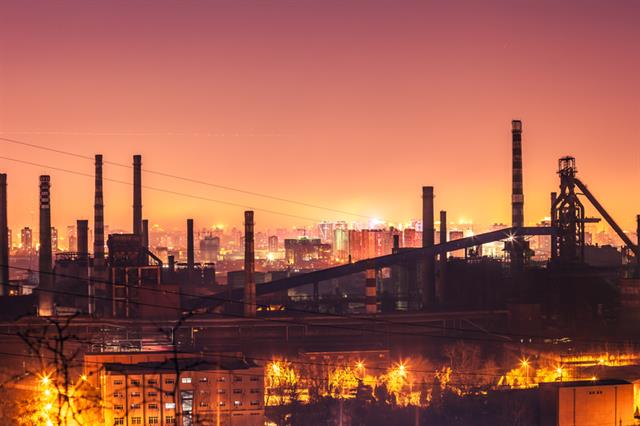 Chinese organisations are among the top global players. PHOTO: DREAMSTIME
Chinese organisations are among the top global players. PHOTO: DREAMSTIMEAccording to Global Forklift Trucks Market, a report by Skyquestt, the global market for forklifts was valued at USD52.8 billion in 2021. By 2028, the report says, the market is likely to reach a value of USD114.55 billion, and it will do so at a compound annual growth rate (CAGR) of more than 11.7%.
As the report notes, this growth is due to a range of factors including the continued emphasis on efficiency, the move towards automation in materials handling, increased demand from other sectors such as construction, and the rapid global growth of e-commerce and associated growth in warehousing.
While, as Skyquestt notes in its report, North America has the largest share of the market for forklifts, the Asia Pacific region is expected to expand significantly. Demand for forklifts from emerging nations in this region should persist as we approach 2030.
The Asia Pacific region – and in particular China – also continues to become more prominent in terms of forklift manufacturing. While organisations like Hangcha and Heli already feature in lists of the top global players in the sector, several other companies are showing the potential to join them there.
With all of this in mind, it is worth looking more closely at the current state of the Chinese forklift manufacturing industry. Where is it heading? What are its strengths? Where does it stand in a global scheme of things? And what particular challenges does it face?
Expanding exports
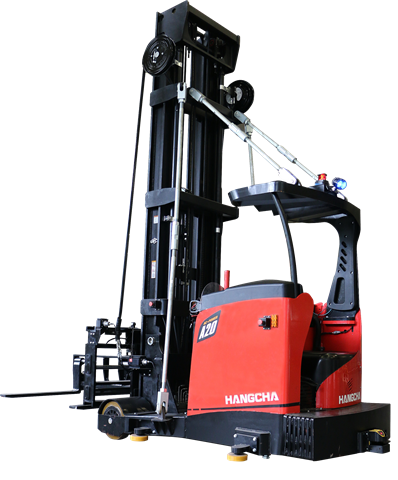 Hangcha products are exported to more than 180 countries and regions
Hangcha products are exported to more than 180 countries and regions
All the manufacturers contacted by Forkliftaction News for this article confirmed the importance of exporting to the success of their organisations. For all, exports account for a significant (and increasing) proportion of sales.
According to deputy general manager of Hangcha, George Zhang, his company’s products are currently exported to more than 180 countries and regions, and in addition, the pace of the company’s international development has accelerated.
“By the end of the third quarter of last year, the export sales volume increased by more than 40%, the operating revenue increased by more than 70%. The share of export revenue in the company's main business will increase from about 20% in 2021 to more than 30% in 2022,” says Zhang.
“The company's export volume and operating revenue have been among the top in the industry for over 10 consecutive years. This also fully reflects that more and more global users like and choose Hangcha products, falling in love with Hangcha manufacturing, and the intelligent manufacturing in China.”
“China, as an indispensable part of the whole world economy, has performed incisively and vividly in the material handling market.”
In the case of UN Forklift, a manufacturer that is committed to providing cost-effective and green forklifts (including lithium battery-powered models) to the global market, exports are even more important. According to Wu Jin Xian, chairman of UN Forklift, they account for more than 90% of the company’s total sales volume.
Michille Shi, vice general manager (sales) at Xilin also emphasises the importance of exports.
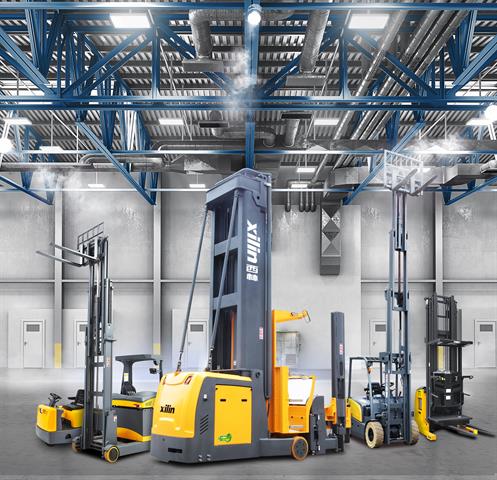 According to Xilin, the global reputation of products 'Made in China' is on the rise
According to Xilin, the global reputation of products 'Made in China' is on the rise
“Compared with the steady growth of exports, the domestic market competition is extremely fierce, leading to the proportion between export and domestic market being bigger,” she says.
“In recent years, our export business has maintained a steady growth. In this special period of the epidemic, we have to thank our government. The strong support and control of the government that has given enterprises a good business environment, making China once again the center of the world economy and the factory of the world.”
Continuing on this theme, Shi says she believes the global reputation of products ‘Made in China’ is on the rise. “China, as an indispensable part of the whole world economy, has performed incisively and vividly in the material handling market,” she adds.
The challenges
Of course, it’s not all smooth sailing. The competitive nature of the global economy ensures that, like everyone else, Chinese forklift manufacturers face their share of challenges.
Beyond fears of an approaching recession and the possibility of increased trade barriers, some of the most significant of these relate to exporting, and more specifically after-sales service. To be successful abroad, manufacturers need to be able to ensure the service they can offer is as good as that of local suppliers.
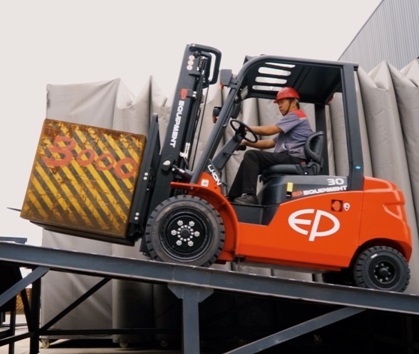 EP Equipment's approach to exporting has involved presenting itself as an international company
EP Equipment's approach to exporting has involved presenting itself as an international company
EP Equipment’s approach to this challenge has been to start to see itself (and present itself) as an international company.
“While we are proud of our Chinese heritage and most of our innovative products have their origin within our Chinese engineering and development team, the international team and diversification of skills within our organisation is what really makes us different,” says John He, CEO of EP Equipment.
Not intent on relying on the quality of its products and the progress it has made in areas like lithium ion technology, big data and the use of artificial intelligence (AI), the company has also ensured it has a presence on the ground wherever its products are available.
“When comparing our approach to the approach of other players, we rely on local expertise and knowledge. In each market, a local management and team takes independent responsibility to develop an organisation that can cater to the needs of the individual market,” He explains.
“By doing so, we are close to our customers and give them the opportunity to influence our development.
“At EP Equipment, everything is about the community. We grow together, we face challenges together and we support each other. Through this community of internal and external entrepreneurs and intrapreneurs we continue our growth path.”
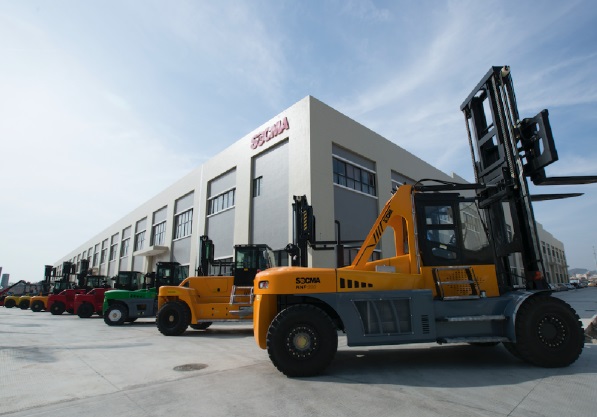 SOCMA is focussed on heavy duty forklifts, telehandlers and electric construction machinery
SOCMA is focussed on heavy duty forklifts, telehandlers and electric construction machinery
SOCMA, a fast growing manufacturer with a focus on heavy duty forklifts, telehandlers and electric construction machinery, has taken a similar approach to the challenge of after-sales service and spare parts.
“In order to meet the fast-growing requirements of the market, SOCMA has launched its plan of establishing a global marketing centre and after-service system,” says Bill Cai, director of SOCMA Overseas.
This is likely to ensure that the company is able to benefit from its key strengths, namely continuous technical innovation and cost reduction. It means that materials handling operations around the world can take advantage of SOCMA’s pioneering inclusion of high-voltage electric systems in heavy lift trucks (from 12 tons to 30 tons), its move to upgrade the hydraulic and control systems of its telescopic forklifts, and so on.
“SOCMA always brings the favourable products to the market with the best lead time, which is based on the complete supply chain in China. We also provide customised products based on comprehensive technical back-up and fast reaction,” says Cai.
Innovation and meeting market expectations
Beyond these challenges, the key to the success of the Chinese forklift manufacturing industry hinges on the quality of its products and whether the players involved are meeting market demands. On this score, things are looking solid.
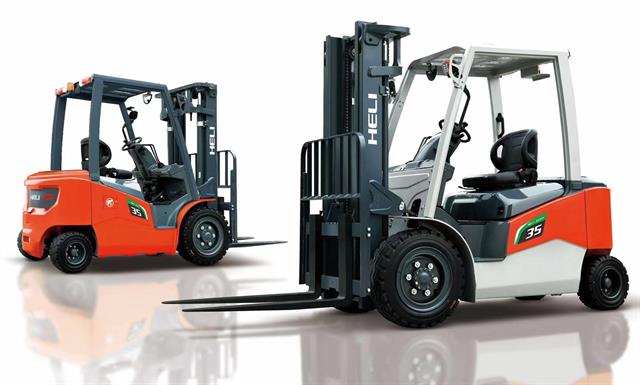 All Heli electric forklifts can be equipped with lithium ion batteries
All Heli electric forklifts can be equipped with lithium ion batteries
Products made by Heli, an organisation that has become a fixture in lists of the world’s top industry players, are a good example.
As Heli’s Li Mingjun, vice general manager of Heli, explains, the advent of strengthened environmental protection policies around the world will see the demand for electric vehicles continue to rise. In response, the company has developed a series of new energy products.
“The whole series of Heli electric products can be equipped with lithium ion batteries, which are about 30% more energy efficient than lead-acid batteries; (with) no acid mist volatilisation, no drip corrosion, no hydrogen gas generation during charging, more energy efficient, safe and environmental friendly, and the product performance is improved,” he explains.
Similarly, Heli has embraced the move towards driverless technology.
“With the increased application of driverless technology and intelligent trends in the forklift industry, Heli has strengthened its R&D and production capacity of intelligent forklifts and improved the quality and performance of intelligent forklifts,” he says.
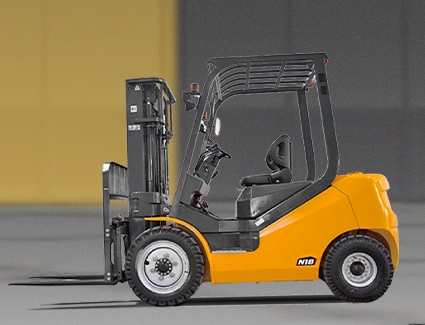 UN Forklift is focussed on developing intelligent, energy-saving and cost-effective products
UN Forklift is focussed on developing intelligent, energy-saving and cost-effective products
Heli’s unique offerings include system integration, specialisation of models and specialisation of project implementation and service.
“The future plan of Heli intelligent logistics is to comprehensively cover indoor and outdoor operating environments, production line storage and cross-regional operating scenarios, develop products and systems for users' needs and provide one-stop logistics solutions for users,” he adds.
Responsiveness to market demand is key. As Wu Jinxian of UN Forklift says, his company’s exports are likely to continue to grow as a result of its efforts to meet the needs of overseas markets.
“UN Forklift will always actively develop more intelligent, more energy-saving and more cost-effective products to meet the different foreign market,” he says, pointing to the N series, NL series, V series, which conform to different market positioning to meet these needs, as evidence of this commitment.
Discover some of the exciting products being developed by our contributors in this dedicated Virtual Showroom.
For this report we interviewed the following industry specialists:
George Zhang
Deputy General Manager
Hangcha
Michille Shi
Vice General Manager (Sales)
Xilin